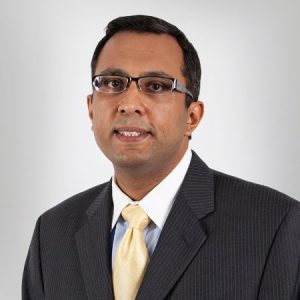If the risk transfer sector is serious about closing the global protection gap (disparity between economic and insured losses post-event) it requires the efforts of the entire insurance value chain and, must be tackled on both a macro and micro level, according to the Vice President of AIR Worldwide’s Marketing group, Vijay Padmanabhan.
 Closing the protection gap in both developed and emerging parts of the world is one of the insurance and reinsurance sectors’ biggest opportunities and challenges. Much discussion has taken place across the risk transfer landscape about how best to increase insurance penetration in underserved parts of the world, such as Asia and Latin America, while increasing flood protection in hazard-prone, yet developed parts of the U.S., for example.
Closing the protection gap in both developed and emerging parts of the world is one of the insurance and reinsurance sectors’ biggest opportunities and challenges. Much discussion has taken place across the risk transfer landscape about how best to increase insurance penetration in underserved parts of the world, such as Asia and Latin America, while increasing flood protection in hazard-prone, yet developed parts of the U.S., for example.
In an article on catastrophe risk modeller AIR Worldwide’s website, Padmanabhan explained how the firm spends a lot of time looking at how best to tackle the growing international protection gap, and that this usually means looking at the problem from a macro level. However, after conducting an experiment, Padmanabhan underlines the importance of looking at both macro and micro level issues, and the need for the entire insurance value chain to work together if the industry is serious about closing the protection gap.
Padmanabhan attempted to purchase flood insurance on a townhouse condo in a suburb of Boston, which isn’t in a flood zone and which includes two insurance policies. Both insurers, says Padmanabhan, were confused as to why he wanted to purchase flood insurance when the property wasn’t in a flood zone. And when one sent over the forms to apply for flood cover, which had to be completed by hand, many of the questions would be challenging for the average homeowner, explained Padmanabhan.
“At AIR we’ve been talking about the protection gap and how to close it at a very macro level, but this exercise gave me a more practical feel for why the protection gap exists at all—including in developed countries,” said Padmanabhan.
“As my own anecdotal experience illustrates, there is a lack of willingness of the front-line insurance distribution system—in this case, insurance agents—to actually push the coverage. To the extent customers are aware of the risks and proactively ask their agents to buy flood or earthquake coverage (a rare situation to be sure), the process of getting this coverage is cumbersome and antiquated to say the least,” he continued.
Padmanabhan stressed that “every player in the insurance value chain” will be required if the industry is going to close the protection gap, from insurers, to modellers, to agents. Technology will also be required to help assess where protection is needed the most and how best to put measures in place to ensure more and more people get the protection the need.
“Getting the entire insurance value chain on the same page to make the necessary investments to close the protection gap is easier said than done of course, but that’s the real problem that needs to be solved if we are serious about closing it,” concluded Padmanabhan.


